On the last day of the Latina/o Theatre Commons’s first national convening in Boston in the fall of 2013, El Teatro Campesino founder Luis Valdez challenged the 75 artists gathered in the room to think about their work as not specifically Latinx but as part of a space he referred to as the new American theatre. This theatre would reflect the intersectional differences of the American populace by virtue of its being created for and about the multiple ethnicities and identities that constitute our national population. Valdez’s vision for the LTC conveners was one in which Latinx theatre artists do not see themselves as marginalized from American culture, but as a critical and central component of the nation’s artistic future.
In many ways that future is already here, the new American theatre Valdez envisioned already alive and well. In the half century since Valdez founded El Teatro—not only his theatre company but the movement—dozens of Latinx theatres have sprouted across the country, advancing the careers of innumerable actors, designers, directors, and playwrights who might have remained otherwise marginalized. In part this reflects a demographic shift in the United States, in which Latinx communities now comprise nearly 56 million people, or roughly 18 percent of the American population. Valdez’s challenge to theatremakers—that they help create an American theatre in which Latinx artists are not separated or othered, but invited to participate as necessary contributors to the national discourse—is being met with the diligent labor of visionaries like himself, who have founded companies and promoted artists who have shaped not just the history of Latinx theatre in the U.S. but theatre in the U.S., period.
Noted Latinx theatre historian Nicolás Kanellos has documented the professional Spanish-language productions in California and Texas throughout the late 19th century. But contemporary Latinx theatre as we know it can be traced to the middle of the 20th century and to spots on either coast. In 1965 Luis Valdez left the San Francisco Mime Troupe to work alongside labor leader Cesar Chavez in organizing farmworkers in Delano, Calif., in resistance to their political and economic exploitation. Eventually Valdez’s community outreach drew upon his skills as a theatre artist, and El Teatro Campesino emerged as a company committed to a range of projects. These began by dramatizing the working conditions of Chicano farmworkers, but soon expanded their scope to educate audiences about the indigenous roots and shared cultural heritage that could unite California Chicanos in opposition to the Vietnam War, housing discrimination, and unequal access to educational opportunities.
El Teatro Campesino’s history is covered elsewhere in this month’s edition (as well as in countless articles, books, and essays). But it’s important to note here the organization’s embrace of rasquache, an aesthetic highlighting the material limitations of Latinx artistic production. This artistic sensibility empowered students and workers who might otherwise have found themselves excluded from participating in the theatre at all to instead make a positive virtue of their lack of resources to create deeply personal and necessary theatre. As a result of this access to art-making, countless young actors, directors, designers, and playwrights were set on the course of professionalization, acquiring training at California universities at a time when the promise of affordable higher education was more readily available to those with minimal means.
Valdez and his ensemble thus inspired a network of theatre companies throughout Chicano communities across the southwestern United States. Some of the theatres that emerged from the early influence of El Teatro Campesino are still thriving, including Su Teatro in Denver, which began as a student-centered theatre company producing agitprop drama and engaging in community activism before expanding its mission, under the leadership of executive artistic director Tony Garcia, to represent and celebrate the cultural heritage of the city’s Latinx community.
Meanwhile, on the East Coast, Latinx theatre developed along more traditional lines. Although amateur Latinx companies had performed throughout New York City in the 1940s and ’50s, in 1953 director Roberto Rodríguez staged Puerto Rican playwright René Marqués’s La carreta (The Oxcart) at the Church of San Sebastian. The play, which chronicles the journey of Puerto Rican mountain people from their village to the island capital of San Juan, then to NYC in search of economic opportunity, found an enthusiastic audience among the Puerto Rican immigrants who had followed the same path, and with similar aspirations.
Many theatre historians point to this production as a seminal moment in NYC’s Latinx theatre, resulting in the formation of several short-lived companies emerging in the city. While many of these companies are no longer in operation, they did create enough of an audience to encourage Joseph Papp to stage Spanish-language plays as part of the New York Shakespeare Festival in 1964, as well as an Off-Broadway production of La carreta starring Raul Julia and Míriam Colón. This restaging of Marqués’s play proved such a success that it encouraged Colón to create the Puerto Rican Traveling Theatre in 1967 (whose history, and recent merger with Pregones Theater in the Bronx, is covered in a separate story here).
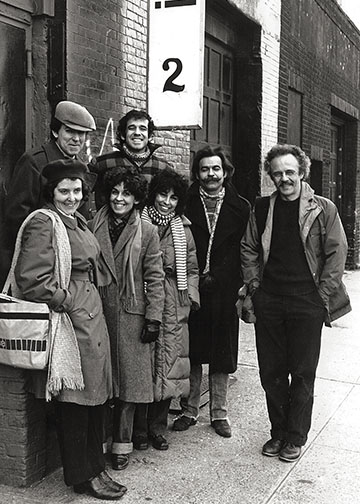
Just a year before PRTT’s founding, New York City also saw the founding of INTAR by Max Ferrá. This pathbreaking theatre had as its original mission the production of works by Latin American authors in English, but eventually it morphed into its current form, as a theatre reflecting the diversity of the Latinx diaspora through its productions, performance lab, and weekly salons. Also in New York, in 1968 producer Gilberto Zaldívar and director René Buch founded Repertorio Español, a theatre dedicated to producing Spanish-language plays in their original language. Further down the Eastern Seaboard, Hugo Medrano established Washington, D.C.’s GALA Hispanic Theatre, while in 1979 Mario Ernesto Sánchez formed Miami’s Teatro Avante.
These foundational companies showcased the heterogeneity of Latinx communities across the eastern half of the United States, in addition to illustrating the diverse ethnic and class differences that make up the Latinx experience. Moreover, the success and influence of these companies began to force Broadway producers to recognize the financial potential of Latinx works. In 1974, Joseph Papp produced Miguel Piñero’s Short Eyes, which moved from Manhattan’s Riverside Church to the Public Theater before beginning a four-month Broadway run at the Vivian Beaumont Theater that garnered six Tony nominations, in addition to recognition as Best American Play from the Obie Awards and New York Drama Critics’ Circle.
Then, in 1979, Los Angeles’s Center Theatre Group brought Luis Valdez’s Zoot Suit to Broadway, where Edward James Olmos received a Tony Award nod for his work during the play’s short run. While neither play was a box-office success, together they laid down a marker, anticipating the ways in which the nation’s growing Latinx populations would begin to demand—and achieve—representation on stages throughout the country.
If the 1960s and ’70s witnessed the emergence of a modern Latinx theatre in cities with significant Latinx populations, the 1980s and ’90s saw the regionalization of Latinx theatres, in keeping with migration patterns, which shifted from coastal cities to the Pacific Northwest, Midwest, and southern and southwestern United States.
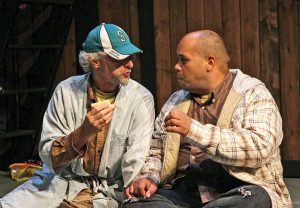
One of the most prominent groups to form in this second wave was Borderlands Theater in Tucson, Ariz. Emerging from the agitprop theatre company Teatro Libertad, Borderlands was founded by Barclay Goldsmith as a nonprofit company in 1986, and continues its brand of theatrical activism under the current leadership of Marc David Pinate with works like Más, which addressed the elimination of Mexican-American studies from Tucson school curricula. The theatre’s mission also calls for representing the diversity of playwrights and artists who work along the U.S./Mexico border, just 70 miles away from Tucson. Similarly, Portland, Ore.’s Milagro Theatre Company developed in 1985 under the leadership of José Eduardo González and Dañel Malán. Though the theatre originally alternated between ancient Greek classics and Latinx works, in 1992 the company decided to devote its energies exclusively to Latinx culture. The theatre’s seasons range from contemporary Latinx plays to celebrations of indigenous dance to holiday festivals designed to create stronger ties between the theatre and its desired audiences. Other West Coast companies to emerge during this period include Seattle’s eSe Teatro in 2010.
But while these theatres were blossoming in cities outside California, that state’s concentration of Latinx artists and audiences continued to make it a hub for exciting new companies and spaces. In 1985 director José Luis Valenzuela and his wife, actress Evelina Fernandez, moved to L.A., where—inspired in part by the collective creative process and political activism of the pioneering El Teatro de la Esperanza—they created the Latino Theatre Lab at the Mark Taper Forum and developed an ensemble of theatre artists, including the late Lupe Ontiveros, Sal Lopez, Geoff Rivas, and others, which eventually formed the Latino Theater Company. This ensemble has staged works for nearly 30 years and continues to be one of Los Angeles’s most vibrant theatrical forces. Similarly playwright Josefina Lopez’s Casa 0101, a storefront which has operated in East L.A. since its inception in 2000, stages an active production season, including world premieres of Lopez’s own work.
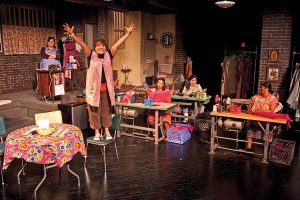
Another place where the Latinx population is booming, Chicago, has accordingly emerged as one of the country’s largest epicenters for Latinx theatre. Rosario Vargas established Aguijón Theater in 1989, and it continues to provide an intimate setting for Spanish-language and bilingual works in its 60-seat theatre and through its citywide playwriting contest. A year later Henry Godinez and Edward Torres founded Teatro Vista, whose commitment to telling Latinx stories, including world premieres by Quiara Alegría Hudes, Kristoffer Diaz, and Tanya Saracho, has made it the city’s largest Latinx theatre and a celebrated cultural leader in the Windy City for a quarter of a century. Not to be outdone, Teatro Luna, founded by Saracho and Coya Paz in 2000, represents the only Latina-identified theatre company in the United States, offering women of color a space to create work that showcases their vision and empowers them to celebrate and perform their stories and experiences. These companies are not only producing rich experiences onstage; their members are also performing the painful but necessary labor of leading the Chicago theatre community through several discussions that have arisen in the wake of casting controversies.
Meanwhile, in St. Paul, Minn., Teatro del Pueblo has promoted Latinx culture throughout the Twin Cities and the northern Plains states since 1992 under the vision of artistic director Alberto Justiniano. The theatre tours educational productions across Minnesota, Iowa, and the Dakotas, in addition to introducing the Twin Cities to artists such as Luis Alfaro.
The historic border state of Texas has seen two of its Latinx theatre companies rise to national prominence in recent years. Dallas’s Cara Mía Theatre Co., founded in 1996, has flourished under the leadership of executive artistic director David Lozano, who has begun to stage devised work drawing on ethnographic research and collaboration with Dallas’s Latinx communities, in addition to incorporating his own training in physical theatre. Austin’s Teatro Vivo opened in 2000, and continues to produce work engaging with the political issues affecting Texas Latinx communities, as well as supporting emerging voices through its Austin Latina/o New Play Festival. While the Lone Star State is a relatively new player in the professional Latinx theatre community, its significant populations and large cultural resources make it a place to watch for scholars and artists interested in the next wave of theatrical activity.
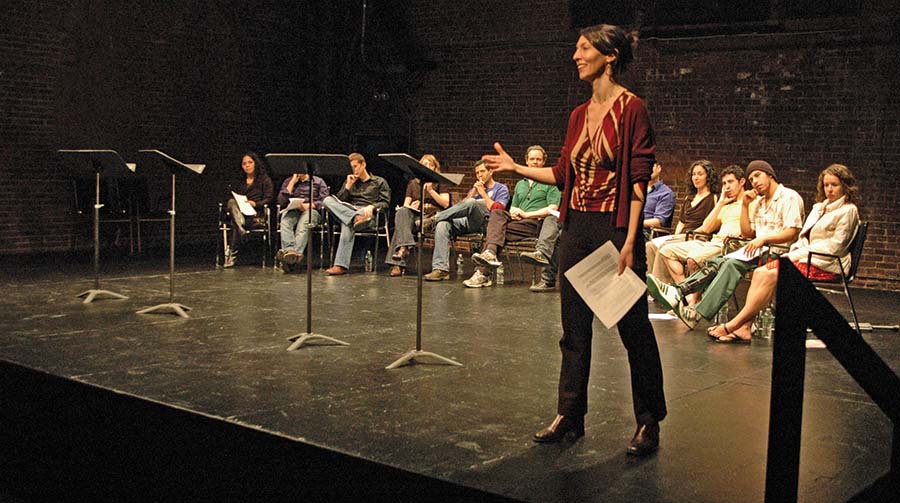
The 21st century has seen continued growth for Latinx theatres across the nation, as culturally specific theatres forge partnerships with each other and with allied theatres interested in broadening their commitment to serve the multiple audiences in their communities. In 2004, Chicago’s Goodman Theatre staged the first iteration of its Latino Theatre Festival, highlighting Latinx theatre companies across the Windy City with a vast array of plays and production techniques drawing upon Latinx traditions. Two years later, the Lark began its much admired U.S./Mexico Playwright Exchange Program in partnership with Mexico’s National Fund for Culture and the Arts. In 2011, Red Bank, N.J.’s Two River Theater initiated the Crossing Borders Festival, an annual series of play readings that explore the variety of national traditions that exists within the Latinx diaspora.
And in 2013, Cleveland Public Theatre executive artistic director Raymond Bobgan, seeking to empower members of the city’s Latinx population, helped to create an all-Latinx ensemble, drawing from artists whose experience ranged from seasoned professionals to newcomers who had never performed. With support from a major charitable organization, Teatro Publico de Cleveland became a sort of company-within-a-company whose productions have ranged from devised work to to the US premieres of two works by Uruguayan playwright Gabriel Calderón.
Finally, earlier this year, Dallas Theater Center collaborated with Cara Mía to stage Lozano and Lee Trull’s Deferred Action. The latter coproduction received considerable attention as a model for the ways in which LORT theatres and Latinx companies might work together to share financial resources and focus on contemporary issues that resonate within their communities and introduce new audiences to each other’s work.
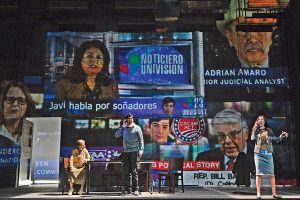
In addition to these joint efforts, relationships are being forged among Latinx artists and companies along lines of allyship and advocacy. The most visible of these is the formation and ongoing development of the Latina/o Theatre Commons. In May 2012, playwright Karen Zacarías convened a small group of artists from across the country to discuss their shared aspirations for Latinx theatre and the challenges that kept them from more frequent fellowship with each other. These artists then partnered with Emerson College’s HowlRound to begin planning an organizational structure that would ultimately lead to the Commons’s formation and the 2013 National Convening in Boston. The LTC gathering marked the first time that Latinx theatremakers had joined together in more than 25 years, enabling artists and scholars who participated in person and via webcasts to plan multifaceted strategies for amplifying the visibility of Latinx theatre throughout the country.
Following this initial assembly, the LTC has staged new-play festivals and conferences in Los Angeles, Chicago, Dallas, Seattle, and New York City. The Latina/o Theatre Commons has also played a major role in starting initiatives such as El Fuego and the Sol Project, which seek to partner Latinx plays with theatre companies across the country who will commit to staging the work in culturally sensitive ways. Moreover, the academic branch of the LTC is working on a series of edited collections, journal articles, and archives, including the Fornés Institute, designed to frame the legacy and contributions of María Irene Fornés, as well as her methodologies and her students, within the larger narrative of the American theatre. The Latina/o Theatre Commons remains committed to producing leaders and organizations that might share resources and services that will fortify the growth and advancement of Latinx theatre across the United States.
In addition to seeing Latinx work increasingly championed and staged at TCG member theatres, a number of influential cultural signifiers illustrate the ascendance of Latinx performance in critical and commercial esteem. Broadway, for one, is more hospitable than it was in the 1970s to Latinx work, which has ranged in recent years from John Leguizamo’s Freak to Lin-Manuel Miranda and Quiara Alegría Hudes’s In the Heights and Miranda’s Hamilton. The latter two writers join Cuban-born playwright Nilo Cruz as 21st-century Pulitzer Prize recipients, all for works celebrating cultural identity across differences in language, time, and place. Matthew Lopez has seen his work on American Theatre’s most-produced plays list twice with The Whipping Man and The Legend of Georgia McBride. And several of the nation’s leading universities and theatres are employing Latinx faculty and educators to shape the future of secondary, undergraduate, and graduate education through curriculum changes and pedagogical strategies designed to create culturally competent artists and audiences for the theatre.
These changes are vital, and they’re happening not a moment too soon. Latinx peoples are poised to become the nation’s largest ethnic population by 2036, and that demographic shift will come even sooner to many of our nation’s largest theatre-producing cities. If Luis Valdez’s vision for a new American theatre is to come to pass, Latinx people will need to make up a significant portion of the boards, leadership structures, artists, and audiences for theatre in the 21st century. The stage is set; now it’s time to meet the moment—to look outward as much as in, and to continue the developing story of the unfolding complexity of Latinx identity in the U.S. and the Americas. The new American theatre is here, and it’s here to stay.
Noe Montez is director of graduate studies in the Department of Drama and Dance at Tufts University.
*After press time, it was announced that the “rolling world premiere with the National New Play Network” at Cleveland Public Theatre has been cancelled. We had removed that phrase from the story.





